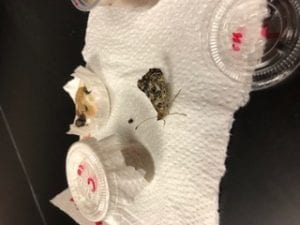Here is the link to the Barbie Bungee Finale Activity:
Here is the video of our best jump:
Reflection:
For this activity, we used information from chapter 3 to be able to calculate the most rubber bands you could attach to Barbie to allow her to bungee jump the closest to the floor without hitting her head. All of our work for this project can be seen in the link above. Our group did fairly well at calculating the number of rubber bands to allow Barbie to have the most fun without getting a concussion. By using the LSRL, we were able to estimate that we would need 29.4847 or about 29 rubber bands for Barbie to bungee jump without whacking her head on the ground, which was about 564cm from the drop point. Unfortunately, our guess was a little off, because Barbie wasn’t near the ground, she had just about reached the meter stick. We added a rubber band, making her total count 30 rubber bands. This time, it worked! Barbie was only 10cm from the floor when we had attached 30 rubber bands to her. The reason our guess with the LSRL was off is because the LSRL isn’t a perfect method of guessing the exact value. As you can see with the residual graph, the line has a tendency to over- or under-predict. Since we were only one rubber band off (or half a rubber band, if you’re looking at the exact value predicted by the LSRL), the error most likely came from the LSRL. Overall, the project was a success, and it was a really fun way to learn everything about chapter 3.
